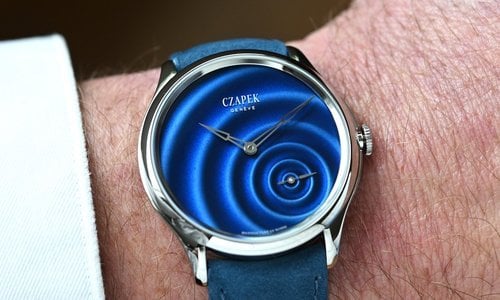The Métiers d’Art “La Symbolique des Laques” watch series was born of a respect for traditions and for the watchmaking creativity that since 1755 has been convincing Vacheron Constantin of the need to pass on skills, art and the craftsman’s motions so they will be written on the pages of history. This is more than a conviction; it is a calling to perpetuate the skills that combine virtuosity with precision, in both the technical and decorative realms. These talents, inherited from past centuries and handed down from generation to generation, are continually enriched by the quest for excellence and the support for creativity that are two of Vacheron Constantin’s key values.
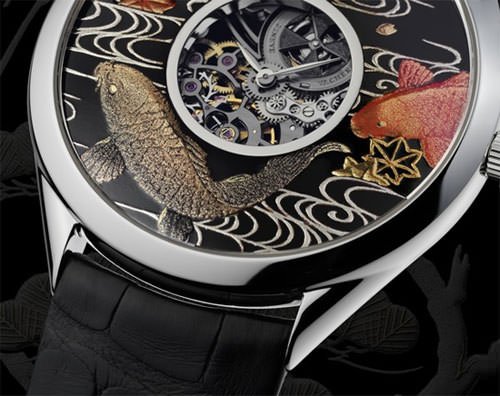
Carp (Koi) and Waterfall Watch
Originally representing perseverance, the carp is also famous for its courage and determination. Many Chinese and Japanese legends praise its ability to swim upstream to negotiate rivers and waterfalls, despite currents that often are very strong. Even though carp usually live in calm waters in Japan, they are often represented as moving, bursting powerfully from the water. A symbol of success and good fortune, the carp is behind the May 5 Japanese holiday known as tanngo no sekku or “kodomo no hi,” the Children’s Day festival.
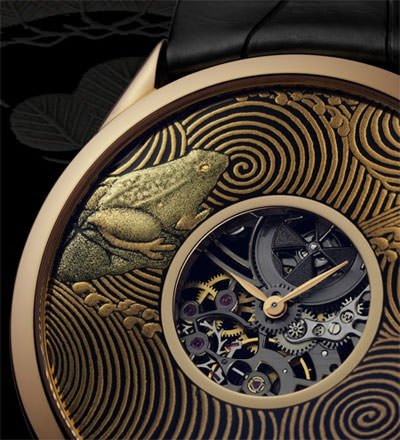
Frog (Kaeru) and Hydrangea Watch
Venerated since the dawn of time in Asia, the frog is the symbol of returning. Its name, kaeru, also means “return.” The frog is known for its faithfulness; legend says that it always returns to its starting point, no matter how great the distance. Living along rivers and rice paddies, the frog has always been very close to Man. It is naturally associated with prosperity in an essentially agricultural, rice-growing economy. Its croaking is often heard in spring, the season of renewal. And if it decides to live in someone’s garden, it protects that person from danger and bad luck.
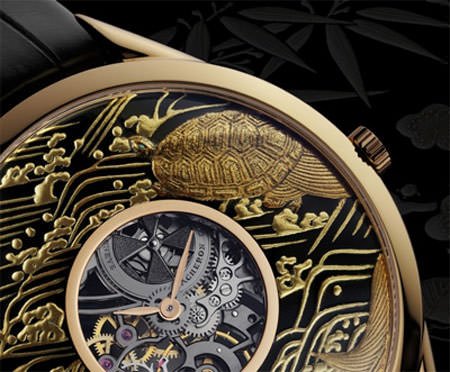
Turtle (Kame) and Lotus Watch
“A crane lives a hundred years, a turtle lives ten thousand years.” In the imaginary realm, for Japanese, the turtle embodies longevity. The way it moves rightly symbolises patience and authority, and the pattern on its shell is also a sign of good luck, as is the octagonal shape of its carapace. Here associated with the lotus flower, it celebrates purity.
In the purest maki-e tradition, the animal’s shell is brought out by a light momidasi polishing done using oil stones, in such a way that the light reflects on its patterns, setting off their geometric precision. Its eye is incrusted with shell using the raden technique, while the taka maki-e technique lends a relief effect to the leaves floating on the shimmering waves.
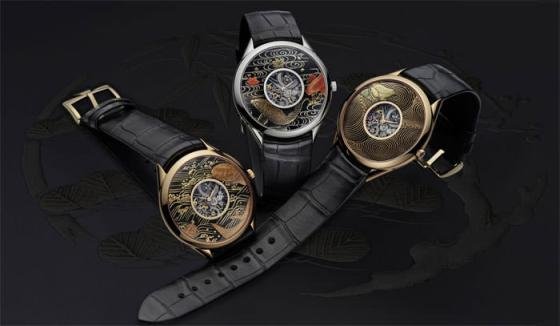
Source: Vacheron Constantin




